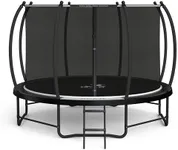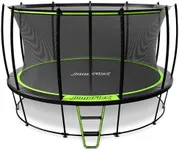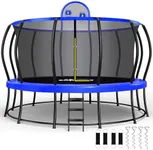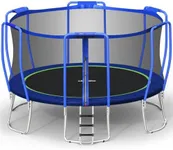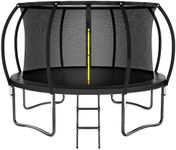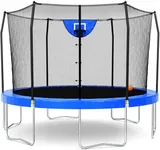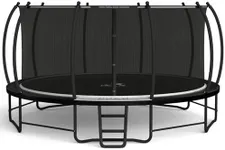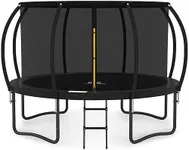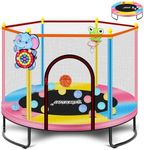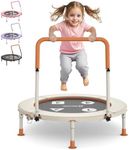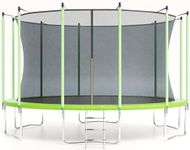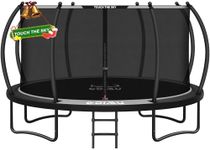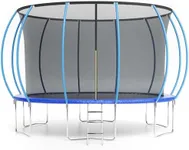Buying Guide for the Best Backyard Trampolines
Choosing the right backyard trampoline can be a fun and rewarding experience, but it's important to consider several key factors to ensure you get the best fit for your needs. Trampolines come in various sizes, shapes, and with different features, so understanding what to look for can help you make an informed decision. Here are some key specifications to consider when selecting a backyard trampoline.SizeThe size of the trampoline is one of the most important factors to consider. It determines how much space you will need in your backyard and how many people can use it at the same time. Trampolines typically range from 6 feet to 16 feet in diameter. Smaller trampolines (6-10 feet) are suitable for younger children or smaller spaces, while larger trampolines (12-16 feet) are better for older kids, teens, and multiple users. Consider the available space in your backyard and the age and number of users when choosing the size.
ShapeTrampolines come in various shapes, including round, rectangular, and oval. Round trampolines are the most common and are generally safer as they direct users towards the center. Rectangular trampolines provide a larger jumping area and are often preferred by gymnasts and athletes for their even bounce. Oval trampolines offer a combination of the two, providing a larger jumping area while still being relatively safe. Choose the shape based on the intended use and the available space in your backyard.
Weight LimitThe weight limit of a trampoline indicates the maximum weight it can safely support. This is crucial for safety and durability. Trampolines with higher weight limits are generally more robust and can accommodate multiple users or heavier individuals. Weight limits typically range from 150 pounds to over 400 pounds. Consider the number of users and their weights to ensure the trampoline you choose can safely support them.
Safety FeaturesSafety features are essential to prevent injuries while using the trampoline. Look for trampolines with safety nets, padded frames, and secure enclosures. Safety nets prevent users from falling off the trampoline, while padded frames protect against impact with the metal parts. Some trampolines also come with additional features like no-gap enclosures and reinforced stitching for added safety. Prioritize trampolines with comprehensive safety features, especially if young children will be using it.
Spring vs. SpringlessTrampolines can have traditional springs or use a springless design. Spring-based trampolines are more common and provide a good bounce, but they can pose a risk of pinching or injury if not properly covered. Springless trampolines use flexible rods or other mechanisms to provide bounce and are generally considered safer as they eliminate the risk of spring-related injuries. Decide based on your preference for safety and bounce quality.
DurabilityDurability is important to ensure your trampoline lasts for many years. Look for trampolines made from high-quality materials such as galvanized steel frames and UV-resistant jumping mats. The stitching and overall construction should be robust to withstand regular use and various weather conditions. A durable trampoline will provide better value and a safer experience over time. Consider the climate in your area and how often the trampoline will be used when evaluating durability.
Assembly and MaintenanceConsider the ease of assembly and maintenance when choosing a trampoline. Some trampolines come with detailed instructions and all necessary tools, making assembly straightforward, while others may require more effort. Maintenance involves checking for wear and tear, ensuring the safety net is intact, and keeping the jumping mat clean. Choose a trampoline that you can easily assemble and maintain to ensure it remains safe and functional for years to come.

